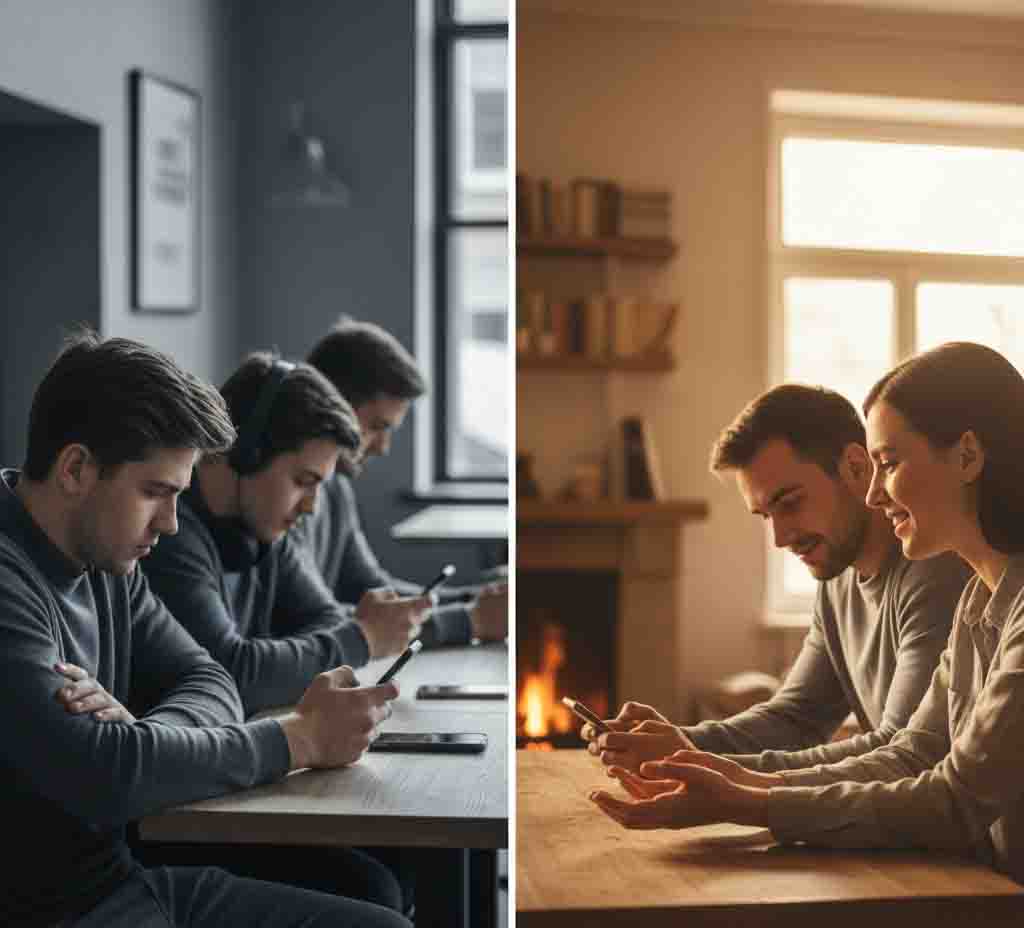Why Do We Instantly Connect With Some People?
Have you ever met someone and felt an immediate, deep connection—as if you’ve known them for years? Or struggled to understand why some relationships flourish while others remain superficial? The answers lie in fascinating psychological research that reveals what truly creates bonds between people.
Most of us intuitively know that genuine connection differs dramatically from casual acquaintance. That magical feeling of being “seen” and understood taps into fundamental aspects of human psychology and neuroscience. Understanding these principles can help you cultivate more meaningful relationships in all areas of your life.
Q: Is instant connection real or just in our heads?
A: It’s both neurologically real and psychologically significant. Research shows these moments involve specific brain activity patterns and hormonal responses that create genuine bonding experiences.
The Hidden Factors That Build Real Connection
The Vulnerability Balance
Contrary to popular belief, vulnerability isn’t about oversharing. The most successful connections follow a gradual, reciprocal pattern of opening up. When one person shares something personal and the other responds with understanding and their own appropriate disclosure, trust builds naturally.
The Listening Myth
Most people think good listening means staying quiet while others talk. True connection requires “active listening”—where you’re not just hearing words but understanding emotions and perspectives. This means periodically checking your understanding: “So what I’m hearing is that you felt frustrated because…”
Consistency Over Intensity
Deep connections aren’t built through dramatic, intense conversations alone. They develop through consistent, small moments of attention and care. Remembering details about someone’s life, checking in during tough times, and showing up when it matters—these patterns build trust more than occasional grand gestures.
Shared Meaning Making
The strongest connections form when people create meaning together. This could be through inside jokes, shared projects, or navigating challenges as a team. These co-created experiences become the “story of us” that bonds people together.
Q: Why do some friendships fade even after deep conversations?
A: Without consistent maintenance and shared experiences, even intense connections can fade. Relationships need ongoing investment and mutual effort to survive life’s changes and challenges.

Practical Steps to Build Better Connections
Start With Curiosity
Replace judgment with genuine curiosity. Instead of thinking “I disagree,” try wondering “I wonder what experiences led them to this perspective?” This mental shift transforms how you engage with others.
Practice Gradual Vulnerability
Share something slightly personal and see how the other person responds. If they reciprocate with care and their own disclosure, the connection deepens. If not, you’ve risked little.
Create Connection Rituals
Establish small, consistent patterns with people you want to connect with—whether it’s a weekly coffee, sharing interesting articles, or checking in about a shared interest. These rituals build connection infrastructure.
Listen For Values, Not Just Stories
When people share experiences, listen for the values underneath. Someone talking about work stress might value competence or recognition. Understanding these deeper drivers helps you connect more meaningfully.
Q: How can introverts build deep connections without exhausting themselves?
A: Focus on quality over quantity. One or two meaningful conversations per week can build stronger connections than numerous superficial ones. Use your natural listening abilities and prepare questions in advance to feel more comfortable.
Why Modern Life Makes Connection Difficult
Our current environment creates unique challenges for genuine connection. Social media encourages performance over authenticity. Busy schedules leave little time for unstructured interaction. The constant distraction of devices fractures our attention, making true presence increasingly rare.
Additionally, many people have learned to associate vulnerability with risk rather than opportunity. Past experiences of rejection or misunderstanding can make us protective of our true thoughts and feelings. Understanding these barriers is the first step toward overcoming them.
Q: Can digital connections be as meaningful as in-person ones?
A: They can be different but equally meaningful when they include consistent, vulnerable communication and shared experiences. The medium matters less than the quality of engagement and emotional authenticity.
Small Changes for Big Impact
Building better connections doesn’t require personality changes or dramatic life overhauls. Small, consistent practices often create the most significant shifts:
-
Put your phone away during conversations
-
Follow up on things people have shared with you
-
Share your genuine reactions rather than polished responses
-
Ask “how” and “why” questions that invite deeper sharing
-
Notice and acknowledge emotional cues in others
The most beautiful aspect of human connection is its reciprocity. When you become better at connecting with others, you’ll find others connecting more deeply with you. This creates a positive cycle that enriches everyone involved.
Q: What’s the one thing I can do today to improve my connections?
A: Reach out to someone you care about with a specific memory or appreciation. Instead of “thinking of you,” try “I was just remembering that time we…[specific memory] and it made me smile. How are you doing with…[current thing in their life]?” Specificity builds connection.



